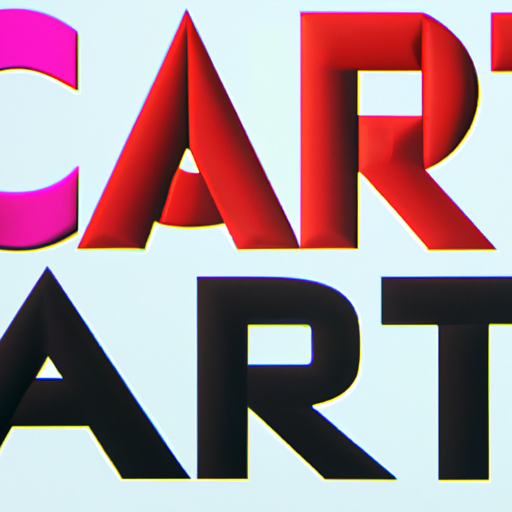
-
Table of Contents
The Craft of Hand-Lettering in Graphic Design

Hand-lettering is a timeless art form that has been used in graphic design for centuries. It involves the creation of custom letterforms by hand, giving designers the freedom to express their creativity and add a personal touch to their work. In recent years, hand-lettering has experienced a resurgence in popularity, with many designers and brands embracing its unique and authentic aesthetic. In this article, we will explore the craft of hand-lettering in graphic design, its history, techniques, and its role in contemporary design.
The History of Hand-Lettering
Hand-lettering has a rich history that dates back to ancient civilizations. In ancient Rome, scribes would meticulously hand-write manuscripts, creating beautiful letterforms with intricate details. During the Renaissance, calligraphy became a highly regarded art form, with master calligraphers creating elaborate scripts for religious texts and important documents.
With the invention of the printing press in the 15th century, hand-lettering took a backseat to typography. However, it experienced a revival in the 20th century with the rise of graphic design. Designers like Paul Rand and Saul Bass incorporated hand-lettering into their work, adding a unique and personal touch to their designs.
The Techniques of Hand-Lettering
Hand-lettering requires a combination of artistic skill, precision, and attention to detail. Here are some key techniques used by hand-lettering artists:
- Sketching: Hand-lettering begins with sketching out the letterforms. Artists experiment with different styles, sizes, and compositions before finalizing their design.
- Inking: Once the sketch is complete, artists use various tools such as pens, brushes, or markers to ink the letterforms. This is where the design truly comes to life.
- Detailing: Hand-lettering often involves intricate details such as flourishes, ligatures, and embellishments. Artists carefully add these elements to enhance the overall aesthetic of the design.
- Digitizing: In the digital age, many hand-lettering artists digitize their work to make it more versatile and accessible. They scan or photograph their hand-drawn letterforms and refine them using graphic design software.
The Role of Hand-Lettering in Contemporary Design
In today’s digital world, where everything seems to be computer-generated, hand-lettering offers a refreshing and authentic alternative. It adds a human touch to designs and evokes a sense of nostalgia and craftsmanship. Hand-lettering is particularly popular in branding and packaging design, where companies strive to create a unique and memorable identity.
Many well-known brands have embraced hand-lettering in their designs. For example, Coca-Cola’s iconic logo was hand-lettered in the late 19th century and has remained virtually unchanged ever since. This demonstrates the enduring power of hand-lettering in creating a strong and recognizable brand identity.
Hand-lettering is also widely used in the world of advertising. In a cluttered marketplace, hand-lettered advertisements stand out and grab attention. They have a distinct charm that resonates with consumers and helps to create a lasting impression.
Case Studies: Hand-Lettering in Action
Let’s take a look at some real-world examples of hand-lettering in graphic design:
1. Starbucks
Starbucks, the global coffee chain, often incorporates hand-lettering in its seasonal promotions. Their hand-drawn chalkboard signs and hand-lettered menu boards create a warm and inviting atmosphere in their stores. This personal touch aligns with their brand values of community and craftsmanship.
2. The New York Times
The New York Times, a renowned newspaper, occasionally features hand-lettered headlines on their front page. This adds a unique and artistic element to their design, capturing the attention of readers and conveying the importance of the news stories.
3. Etsy
Etsy, an online marketplace for handmade and vintage goods, often uses hand-lettering in their branding and marketing materials. This aligns with their mission of supporting independent artists and artisans, creating a sense of authenticity and craftsmanship.
The Benefits of Hand-Lettering
Hand-lettering offers several benefits for graphic designers:
- Uniqueness: Hand-lettering allows designers to create custom letterforms that are unique to their project. This sets their work apart from generic typefaces and adds a personal touch.
- Authenticity: Hand-lettering evokes a sense of authenticity and craftsmanship. In a world dominated by digital design, hand-lettered elements stand out and create a lasting impression.
- Flexibility: Hand-lettering can be adapted to various mediums and styles. It can be used in print, digital, and even three-dimensional designs, offering designers a versatile tool to express their creativity.
- Emotional Connection: Hand-lettering has a unique ability to evoke emotions and create a connection with the audience. The organic and imperfect nature of hand-drawn letterforms can evoke nostalgia, warmth, and a sense of human touch.
Conclusion
Hand-lettering is a craft that has stood the test of time. Its rich history, intricate techniques, and unique aesthetic make it a valuable tool in the world of graphic design. From branding to advertising, hand-lettering adds a personal touch and creates a lasting impression. As designers continue to embrace the digital age, hand-lettering offers a refreshing and authentic alternative that resonates with audiences and captures the essence of craftsmanship.
